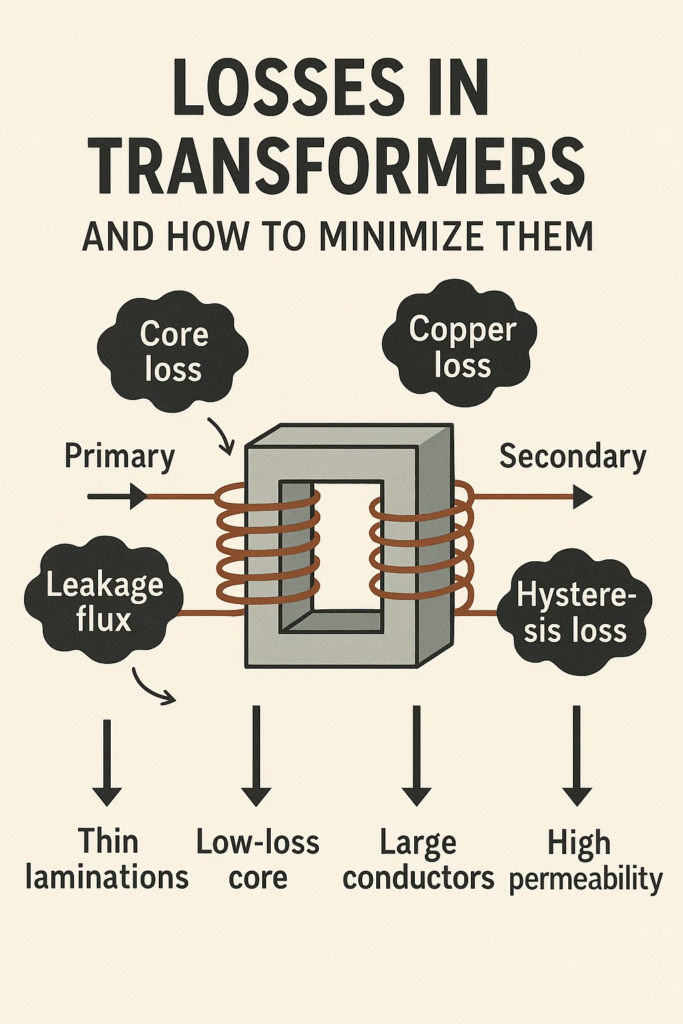Introduction
Transformers are essential components in electrical power systems, enabling efficient voltage conversion for transmission and distribution. However, they are not entirely efficient and experience various types of losses, which impact performance and operational costs. Understanding these losses and implementing strategies to minimize them is crucial for improving transformer efficiency and longevity.
Types of Losses in Transformers
Transformers experience different types of losses, primarily categorized into core losses and winding losses:
- Core Losses (Iron Losses)
- Hysteresis Loss: Occurs due to repeated magnetization and demagnetization of the core material.
- Eddy Current Loss: Induced currents in the core cause energy dissipation in the form of heat.
- Minimization: Using high-quality silicon steel cores and laminating the core reduces these losses.
- Copper Losses (Winding Losses)
- Caused by the resistance of transformer windings when current flows through them.
- Minimization: Using conductors with lower resistance and optimizing winding design reduces copper losses.
- Stray Losses
- Result from leakage flux interacting with metallic parts of the transformer.
- Minimization: Proper shielding and optimized core design help mitigate stray losses.
- Dielectric Losses
- Occur in the insulation material due to electrical stress.
- Minimization: Using high-quality insulation materials reduces dielectric losses.
Methods to Minimize Transformer Losses
Several strategies can be employed to enhance transformer efficiency:
- Optimized Core Design: Using laminated cores and high-grade materials reduces iron losses.
- Improved Winding Design: Lower resistance conductors and efficient winding layouts minimize copper losses.
- Regular Maintenance: Periodic inspections and cleaning prevent degradation and ensure optimal performance.
- Use of Modern Technology: Advanced materials and real-time monitoring systems optimize transformer operation.

Conclusion
Transformer losses can significantly impact the efficiency and reliability of power systems. By implementing advanced design improvements, selecting high-quality materials, and conducting regular maintenance, these losses can be minimized effectively. As electrical networks evolve, adopting innovative solutions for transformer optimization will ensure improved energy efficiency and lower operational costs, contributing to a more sustainable power infrastructure.
